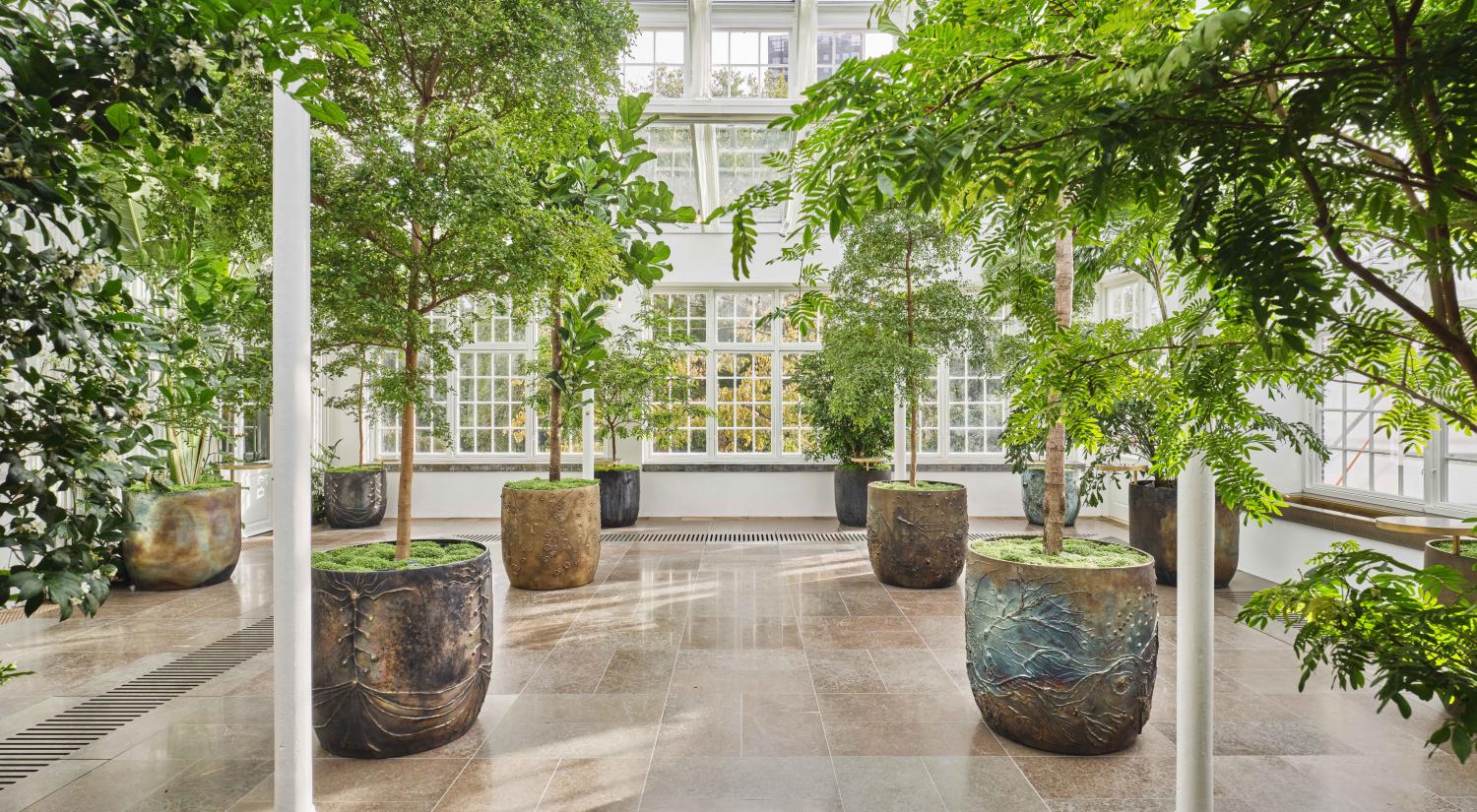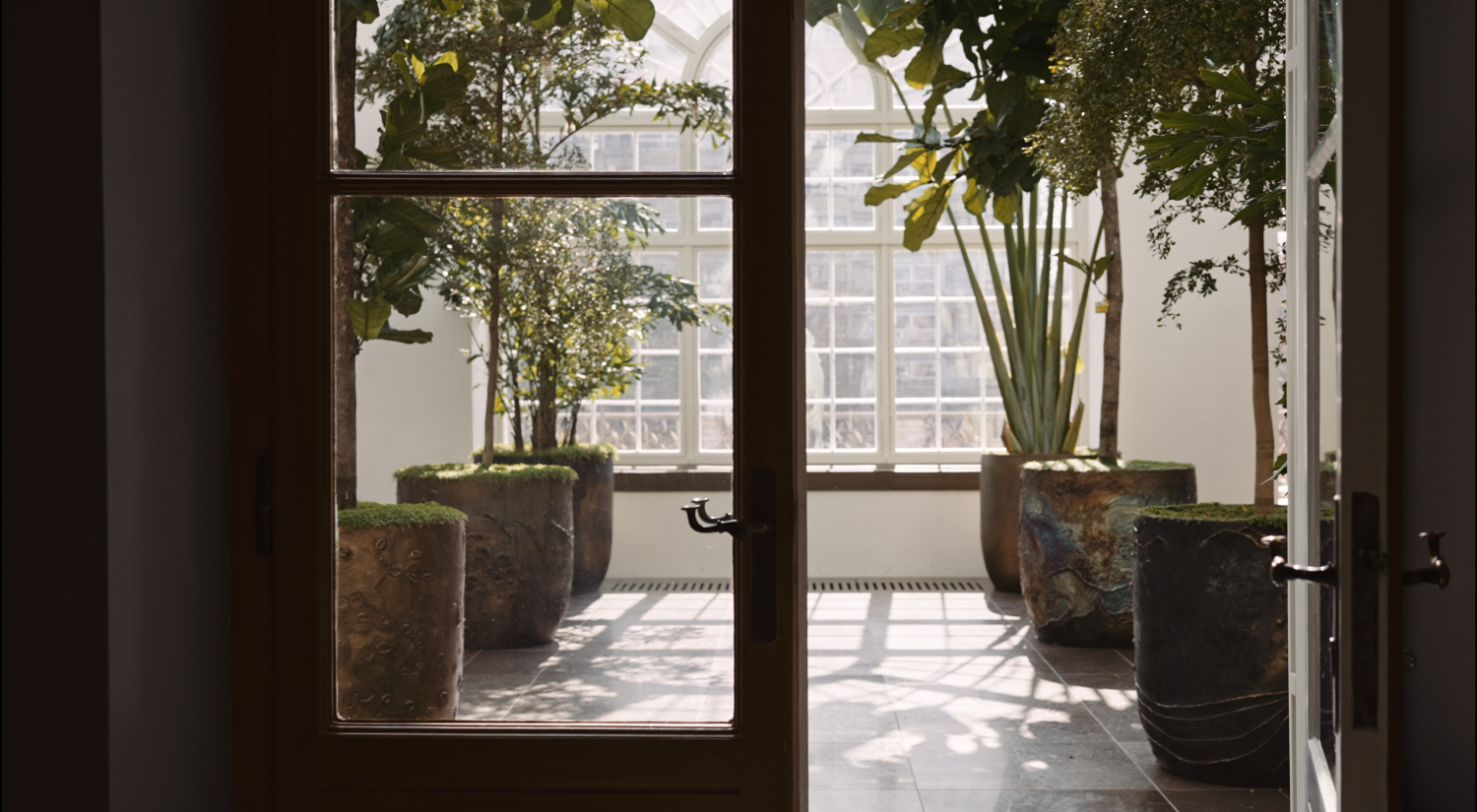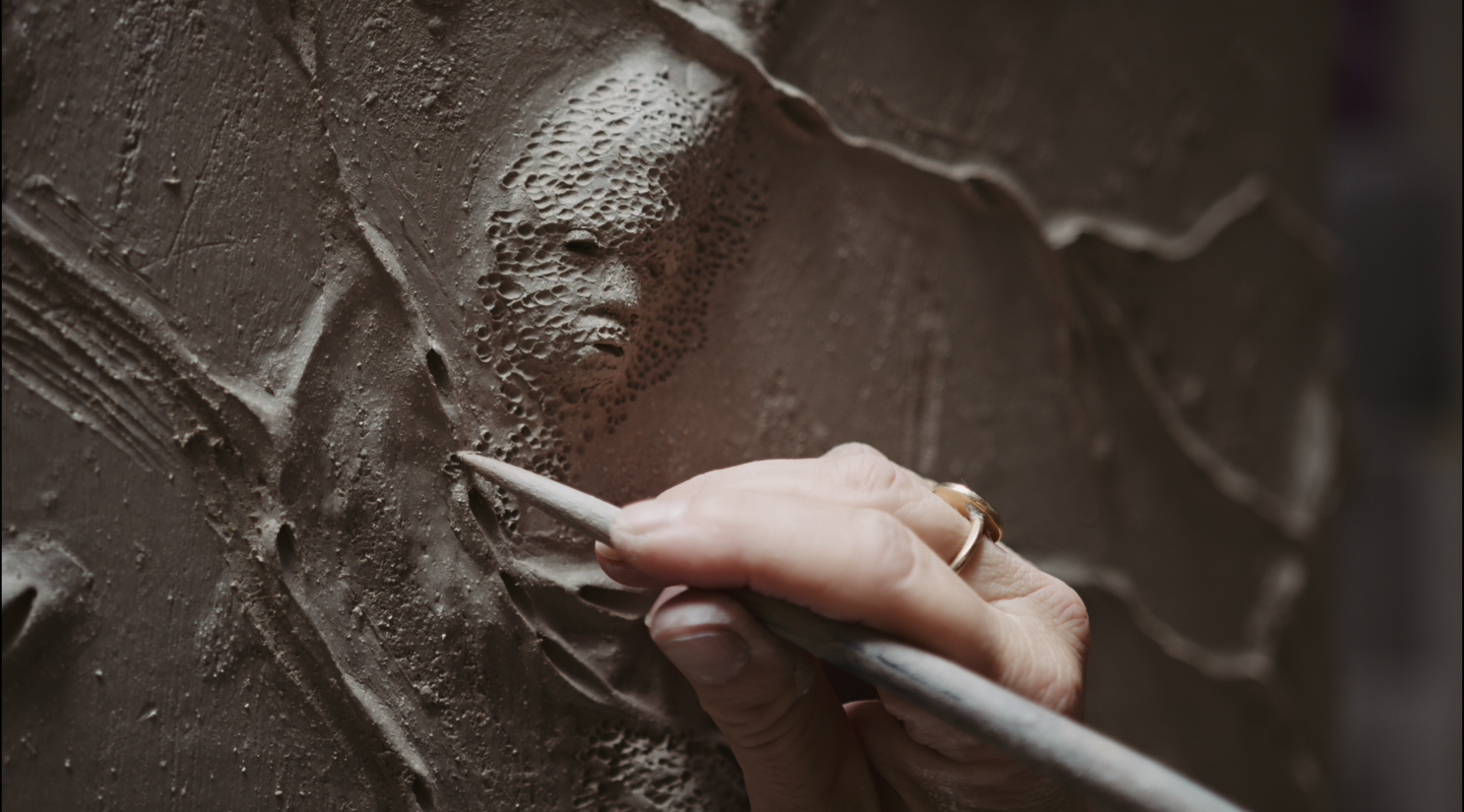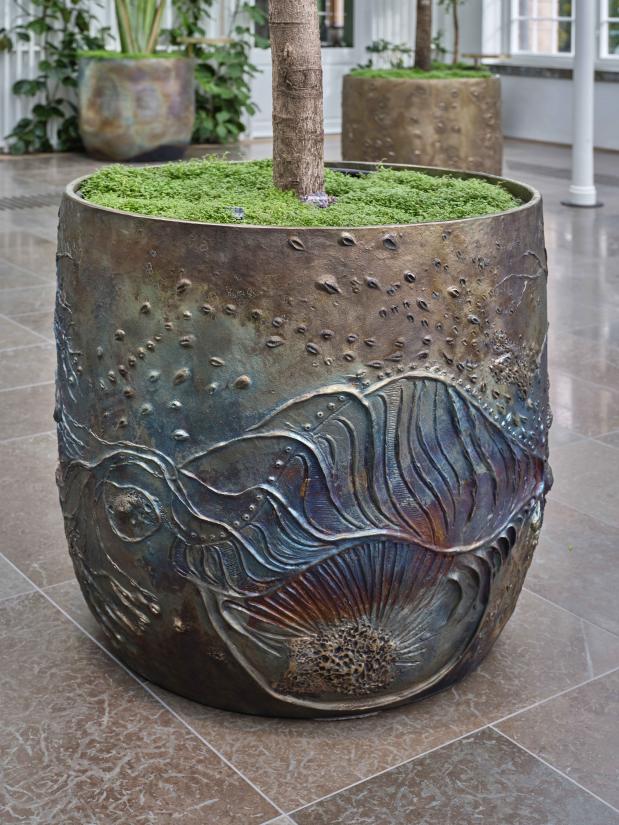The Carlsberg brewery was founded by J. C. Jacobsen on a large and well-situated plot on Valby Hill in 1846. Over the following years, he also had a private villa built on the plot, complete with greenhouses and a garden, and moved in with his wife, Laura, and son, Carl. Together, J. C. and Laura Jacobsen made the lavish home on Gamle Carlsberg Vej a cultural powerhouse, their personal lives and work fused into one.
After the couple’s death, throughout most of the 20th century the building served as an honorary residence for varying leading scientists, including the Danish nuclear physicist Niels Bohr. In 1997, the villa was converted into a science conference centre, and today, it houses the Carlsberg Academy. As part of the recent extensive renovation, new works of art have been added in the form of 16 bronze vessels in the Conservatory.
References to 15th-century alchemy
In creating the vessels, Cathrine Raben Davidsen drew on inspiration from alchemy and early concepts of nature, themes that are represented in the decorations on the large bronzes. Among the decorations are plants and microorganisms – so-called hydra-polyps – jellyfish and algae: organisms that live in water and which are not visible to the naked eye. Other vessels feature constellations of stars and alchemical imagery. Cathrine Raben Davidsen also uses totem masks in her decoration of the vessels: tiny faces with the same almost magical, timeless and fleeting character as her paintings.
The title of Cathrine Raben Davidsen’s decoration, Aurora Consurgens, in English: ‘Rising Dawn’, refers to an alchemical treatise from the 15th century. Alchemy represents the notion of ultimate transformation, and the alchemical process bears some resemblance to the physical crafting of the bronze vessels, from the initial modelling stage to the pouring of liquid bronze and, finally, the patination process by fire.
See a film about Cathrine Raben Davidsen’s work and the creation of the magnificent vessels here.
Respectful renovation
The renovation project was undertaken by Elgaard Architecture, a studio specializing in historic and cultural heritage buildings. Working with historians and scientific experts, the architects uncovered the history and characteristics of the buildings. From floor to ceiling, from outside in, the villa with its greenhouses and garden now once again appears as it did when the Jacobsen family lived here, thanks to the painstaking and gentle work of many of Denmark’s finest architects, brass moulders, blacksmiths, conservators, stucco workers, engineers, electricians and carpenters. The project involved no fewer than 36 different crafts.
Read more about the restoration of Carlsberg Academy.







